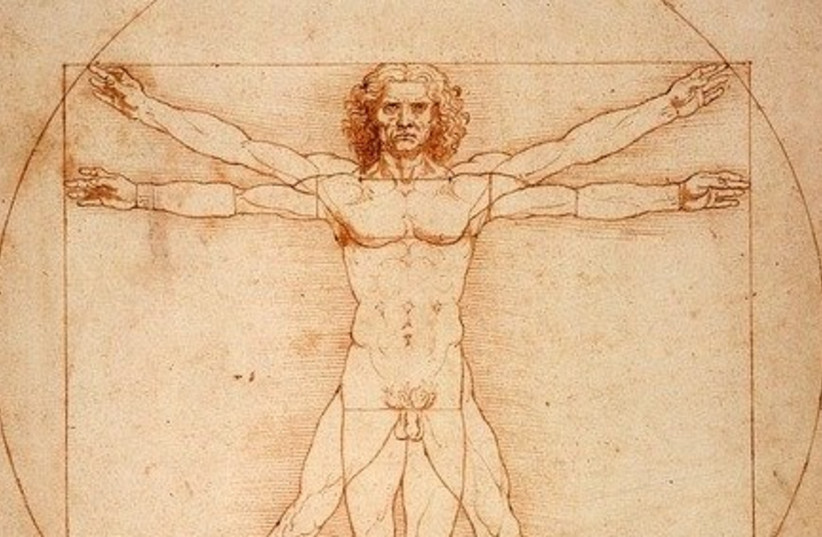Half a millennium after Leonardo da Vinci explained gravity, engineers at the California Institute of Technology (Caltech) discovered that his understanding of the phenomenon – while not entirely accurate – was centuries ahead of his time. Despite limited tools, the great Italian thinker displayed ingenious problem-solving.
In an article just published in the journal Leonardo, the researchers draw upon a fresh look at one of da Vinci’s notebooks to show that the famed polymath had devised experiments to demonstrate that gravity is a form of acceleration and that he modeled the gravitational constant to around 97% accuracy.
Da Vinci, who lived from 1452 to 1519, was well ahead of the curve in exploring these concepts. It wasn’t until 1604 that Galileo Galilei suggested that the distance covered by a falling object was proportional to the square of time elapsed; it was only in the late 17th century that Sir Isaac Newton expanded on that to develop a law of universal gravitation, describing how objects are attracted to one another. Da Vinci’s primary hurdle was limited by the tools at his disposal – he didn’t possess a way to precisely measure time as objects fell.
Da Vinci’s experiments were first spotted by Caltech aeronautics and medical engineering Prof. Mory Gharib, in the Codex Arundel, a collection of papers written by da Vinci that cover science, art and personal topics. In early 2017, Gharib was exploring da Vinci’s techniques of flow visualization to discuss with students he was teaching in a graduate course when he noticed a series of sketches showing triangles generated by sand-like particles pouring out from a jar in the newly released Codex Arundel, which can be viewed online courtesy of the British Library.
“What caught my eye was when he wrote ‘Equatione di Moti’ (equation of motion) on the hypotenuse of one of his sketched triangles – the one that was an isosceles right triangle,” said Gharib, lead author of the Leonardo paper entitled “Leonardo da Vinci’s Visualization of Gravity as a Form of Acceleration.” “I became interested to see what Leonardo meant by that phrase, Gharib wrote.”

To analyze the notes, Gharib worked with colleagues Chris Roh, who was then a postdoctoral researcher at Caltech and is now an assistant professor at Cornell University, along with Flavio Noca of the University of Applied Sciences and Arts-Western Switzerland in Geneva. Noca provided translations of da Vinci’s Italian notes – written in his famous left-handed mirror writing that reads from right to left – as the three researchers studied the manuscript’s diagrams.
How did da Vinci conduct his experiments?
In the papers, da Vinci describes an experiment in which a water pitcher would be moved along a straight path parallel to the ground, dumping out either water or a granular material (most likely sand) along the way. His notes make it clear that he was aware that the water or sand would not fall at a constant velocity but rather would speed up and that the material stops accelerating horizontally because it was no longer influenced by the pitcher and that its acceleration is purely downward due to gravity.
If the pitcher moves at a constant speed, the line created by the falling material is vertical so no triangle forms. If the pitcher accelerates at a constant rate, the line created by the collection of falling material makes a straight but slanted line that then forms a triangle. And, as da Vinci pointed out in a key diagram, if the pitcher’s motion is sped up at the same rate that gravity accelerates the falling material, it creates an equilateral triangle – which is what Gharib originally noticed that da Vinci had highlighted with the note “Equatione di Moti.”
Da Vinci sought to mathematically describe that acceleration. It is here, according to the study’s authors, that he didn’t quite hit the mark. To explore da Vinci’s process, the team used computer modeling to run his water-vase experiment. Doing so produced da Vinci’s error.
“It’s wrong, but we later found out that he used this sort of wrong equation in the correct way.”
Chris Roh
“What we saw is that Leonardo wrestled with this, but he modeled it as the falling object’s distance was proportional to two to the t power [with t representing time] instead proportional to t squared,” Roh said. “It’s wrong, but we later found out that he used this sort of wrong equation in the correct way.” In his notes, da Vinci illustrated an object falling for up to four intervals of time, a period through which graphs of both types of equations line up closely.
“We don’t know if da Vinci experimented further or probed this question more deeply,” Gharib concluded. “But the fact that he was grappling with this problem in this way in the early 1500s shows just how far ahead his thinking was.”
